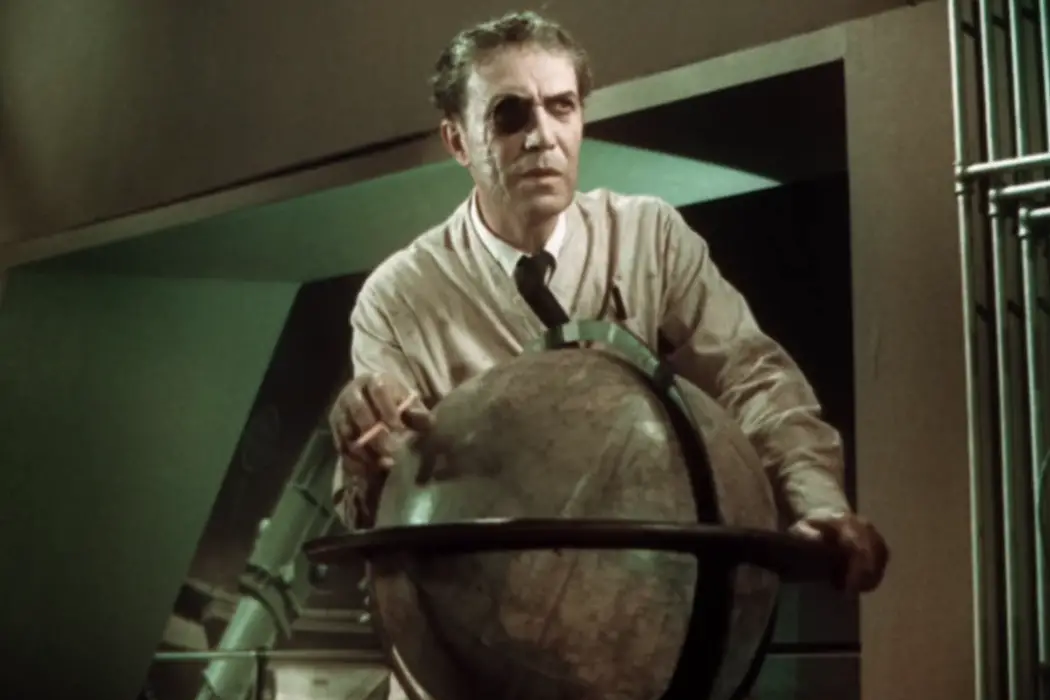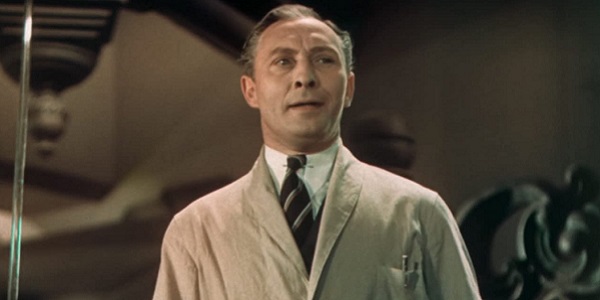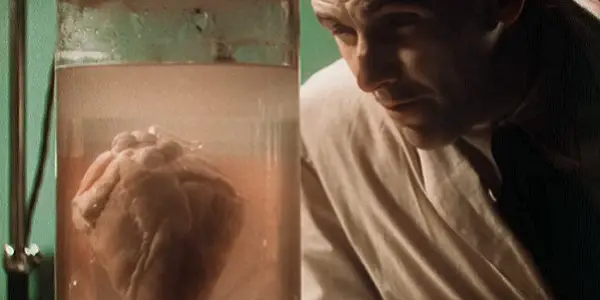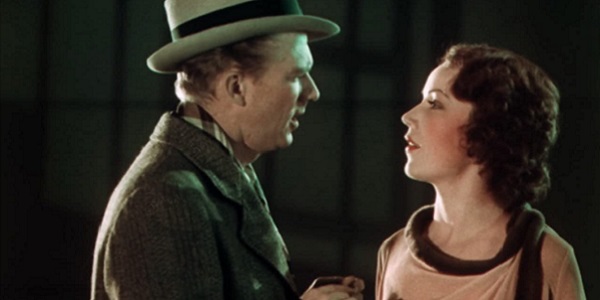TCM Classic Film Festival 2021: DOCTOR X and the Horror Films of Michael Curtiz

Lee Jutton has directed short films starring a killer toaster,…
One of the most prolific directors in the history of the movies, Michael Curtiz was also one whose talent was the most easily adaptable to different genres. From musicals like Yankee Doodle Dandy and White Christmas to swashbucklers like Captain Blood and The Adventures of Robin Hood to now-classic dramas like Mildred Pierce and, of course, Casablanca, it seems like there was no screen story the enigmatic Hungarian-born filmmaker couldn’t handle, and handle masterfully, over the course of his fifty-year career. His work helped elevate the reputation of Warner Bros., making it one of the most acclaimed studios in old Hollywood. And yet, some of Curtiz’s most entertaining movies for Warner Bros. were in a genre many casual film fans would never associate with him or his studio: horror.
Curtiz made three horror movies for Warner Bros. during the 1930s, two of which were made during the glorious Pre-Code era when almost everything could go on screen, and often did. The first, Doctor X, is being featured in a new restoration as part of the annual TCM Classic Film Festival—normally an in-person affair in Hollywood, now a virtual celebration taking place on TCM and HBO Max. Screening extremely late on the opening night of the festival alongside a short documentary featuring author and film historian Alan K. Rode (Michael Curtiz: A Life in Film), Doctor X is often more silly than scary—but for classic film lovers, it’s a must-see thanks to some groundbreaking Max Factor makeup, gorgeous cinematography, and a pre-King Kong performance from one of the most iconic scream queens of all time, Fay Wray.
Murder By Moonlight
Originally released in 1932 in glorious two-strip Technicolor (which utilized red and green filters over the black and white film to create a limited, albeit extremely appealing, palette), Doctor X centers on a plot involving a serial murderer dubbed the Moon Killer due to his penchant for emerging in the light of the full moon to claim his victims. Each of the Moon Killer’s wide range of victims—including a young streetwalker and an old scrubwoman—has been cannibalized post-mortem. But the scalpel used by the killer can only be found in one place: it is manufactured exclusively for a research facility run by Doctor Xavier (Lionel Atwill).

Doctor Xavier is called in by the police to offer his expert opinion on the grisly killings, but it quickly becomes clear that he is in fact the prime suspect. In order to keep his own name as well as that of his institution from acquiring a lot of bad press, Xavier asks the police for 48 hours to apprehend the killer himself. Accompanied by his beautiful daughter (Fay Wray) and followed by a reporter (Lee Tracy) who wants to crack the case, Xavier invites the scientists at his facility out to a Long Island estate to conduct a strange psychological experiment that he thinks will lead the killer to reveal himself: reenacting one of the murders and measuring the heart rates of the suspects while they watch. According to Xavier, whoever freaks out the most will be the one who did the original deed.
The suspects range from Wells (Preston Foster), who studies cannibalism but is an unlikely candidate to be guilty due to his having only one hand; Haines (John Wray), who has an interest in voyeurism; Duke (Harry Beresford), a wheelchair-bound crank; and Rowitz (Arthur Edmund Carewe), who is interested in the psychological effects of moonlight. At any point, it seems as though the killer could be any one of them, despite none of them boasting the monstrously disfigured visage that witnesses claim is that of the Moon Killer.
Shades of Horror
The rich orange-reds and teal-greens of the two-strip Technicolor process give every frame of Doctor X a rich, warm glow; Curtiz’s second horror film for Warner Bros., Mystery at the Wax Museum, was shot the same way. As a result, these purportedly chilling films all feel strangely cozy, as though every room on screen was being lit by a roaring fireplace. Yet that doesn’t make the special effects makeup in these movies any less grotesque. If anything, the prosthetics designed by Max Factor feel all the more realistic because they’re not hiding in the deep, monochromatic shadows one associate with horror shot in black and white; one can see every twist and wrinkle of flesh and easily imagine how early audiences must have gasped in horror upon such a reveal.

While I don’t want to divulge too many spoilers for either of these Curtiz films, one of the more marvelous things about Doctor X is that when the killer is revealed, we see them applying their makeup themselves; as the killer daubs layers of melting synthetic flesh onto their face to disguise their true identity, the horrifying visage of the Moon Killer slowly begins to appear, dripping with menace. For whatever reason, seeing every step of the process play out makes it all the more disturbing, as though taunting the viewer that in fact, it isn’t so hard for a killer to hide in plain sight among us; all they have to do is change their face, and they can even do that themselves. Max Factor was at the time better known for movie makeup designed to make Hollywood actors look more beautiful, not more hideous, making the work done in both Doctor X and Mystery at the Wax Museum all the more remarkable. Practical effects are, in my view, almost always more visually appealing than CGI, and that goes double for these extremely early efforts in the art.
Amidst all of the eye candy that is the cinematography and the special effects, the performances in Doctor X leave a great deal to be desired, though it is fun to watch Fay Wray live up to her reputation by shrieking her way through a few scenes. Almost every actor in Doctor X has dialed their performance up to 11, from Tracy as the snarky reporter with no lack of corny one-liners to Leila Bennett as Mamie, the skittish maid who Xavier enlists against her will to help in his experiment. One feels obligated to keep turning the volume down whenever certain characters emerge on the screen, as they seem to be projecting to the rear row of a theater. (Doctor X was indeed adapted from a stage play, but no one seems to have told most of the actors that they are in the film version.) Curtiz, a master of shot composition, sets up every scene to look glorious, but for a director whose reputation was that of a taskmaster whose high standards often annoyed his actors, one is surprised at the less-than-stellar performances captured here. It doesn’t help that Doctor X lacks a hero as compelling as the wisecracking reporter played by Glenda Farrell (a precursor to her iconic Torchy Blane character) who cheerfully guides us through Mystery at the Wax Museum.

Following Doctor X, TCM viewers will be treated to one of the network’s many short documentaries that fill the gaps between films. Alan K. Rode gives an overview of Curtiz’s extensive oeuvre, one in which individual films are better remembered than the director who worked on them all due to his chameleonic ability to switch genres—who would think that the same man who did Casablanca did Doctor X, after all? Rode then highlights Curtiz’s trio of horror films, which in addition to the two already mentioned includes the Boris Karloff-starring The Walking Dead, and the reasons why they deserve to be remembered alongside his more famous movies. It’s a nice, succinct companion piece to Doctor X that shines a spotlight on a brief but unique period in the filmography of one of our most acclaimed directors.
Conclusion
You’ll have to stay up pretty late, especially on the East Coast, to catch Doctor X during the TCM Classic Film Festival; as befits a Pre-Code horror referencing murder, cannibalism, and other unsavory topics, it’s been given a time slot that the Moon Killer himself would indeed approve of. But if you’re a fan of old Hollywood horror, it’s definitely a gem worth staying up for.
Doctor X will air on TCM on May 7, 2021 at 1:30 AM EST, followed by the short documentary on the horror films of Michael Curtiz. You can view the full TCM Classic Film Festival lineup here.
Does content like this matter to you?
Become a Member and support film journalism. Unlock access to all of Film Inquiry`s great articles. Join a community of like-minded readers who are passionate about cinema - get access to our private members Network, give back to independent filmmakers, and more.
Lee Jutton has directed short films starring a killer toaster, a killer Christmas tree, and a not-killer leopard. Her writing has appeared in publications such as Film School Rejects, Bitch: A Feminist Response to Pop Culture, Bitch Flicks, TV Fanatic, and Just Press Play. When not watching, making, or writing about films, she can usually be found on Twitter obsessing over soccer, BTS, and her cat.












